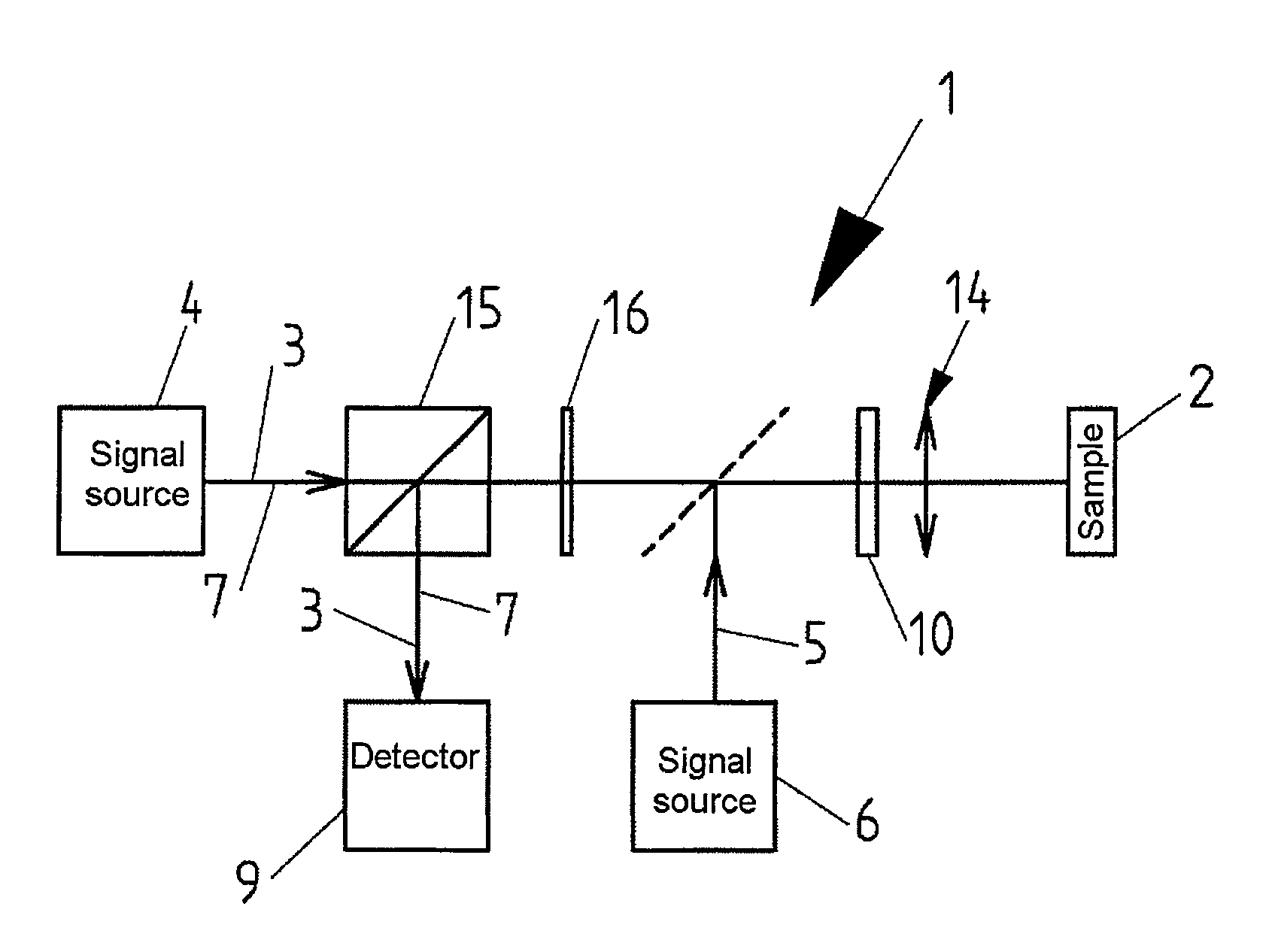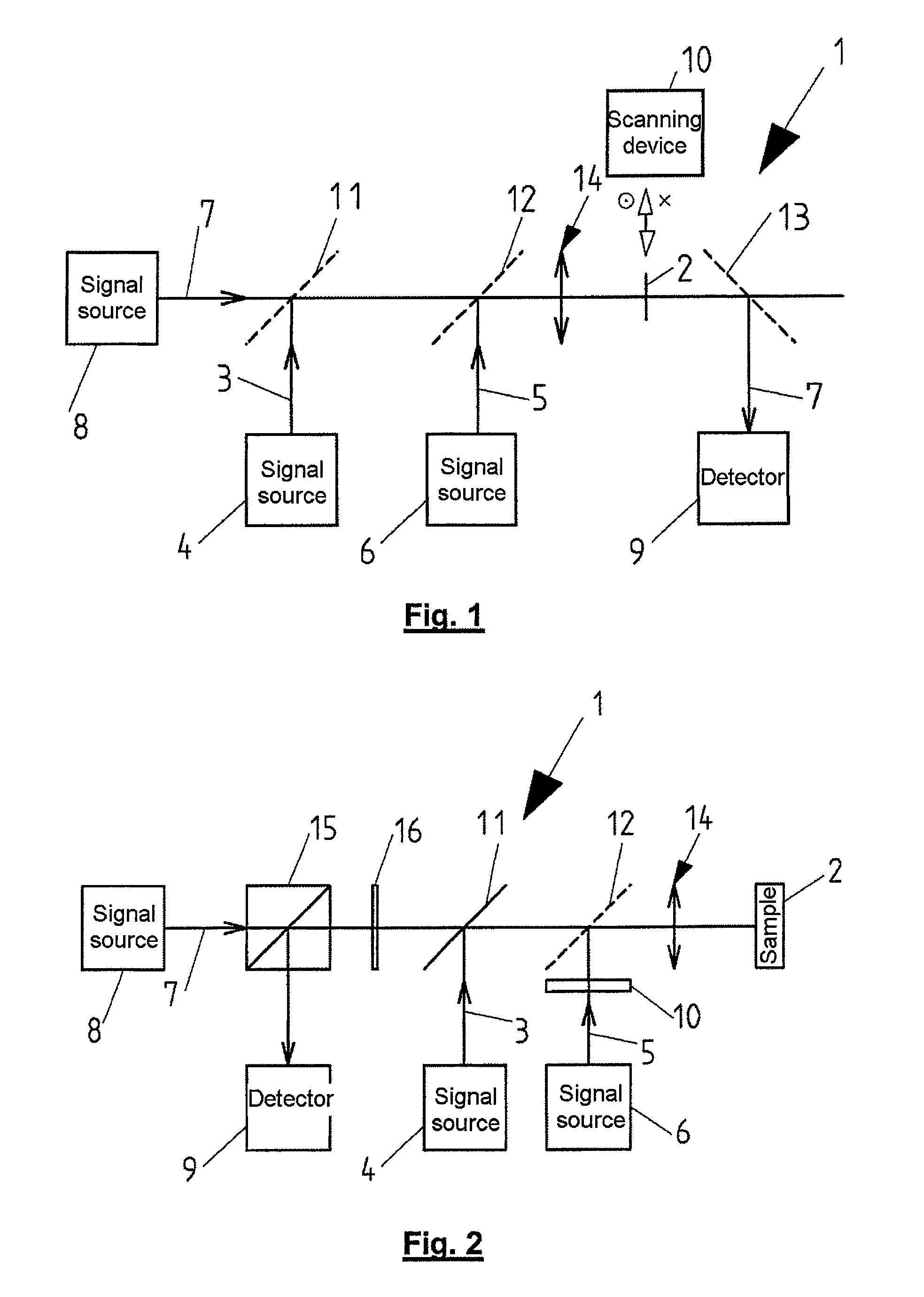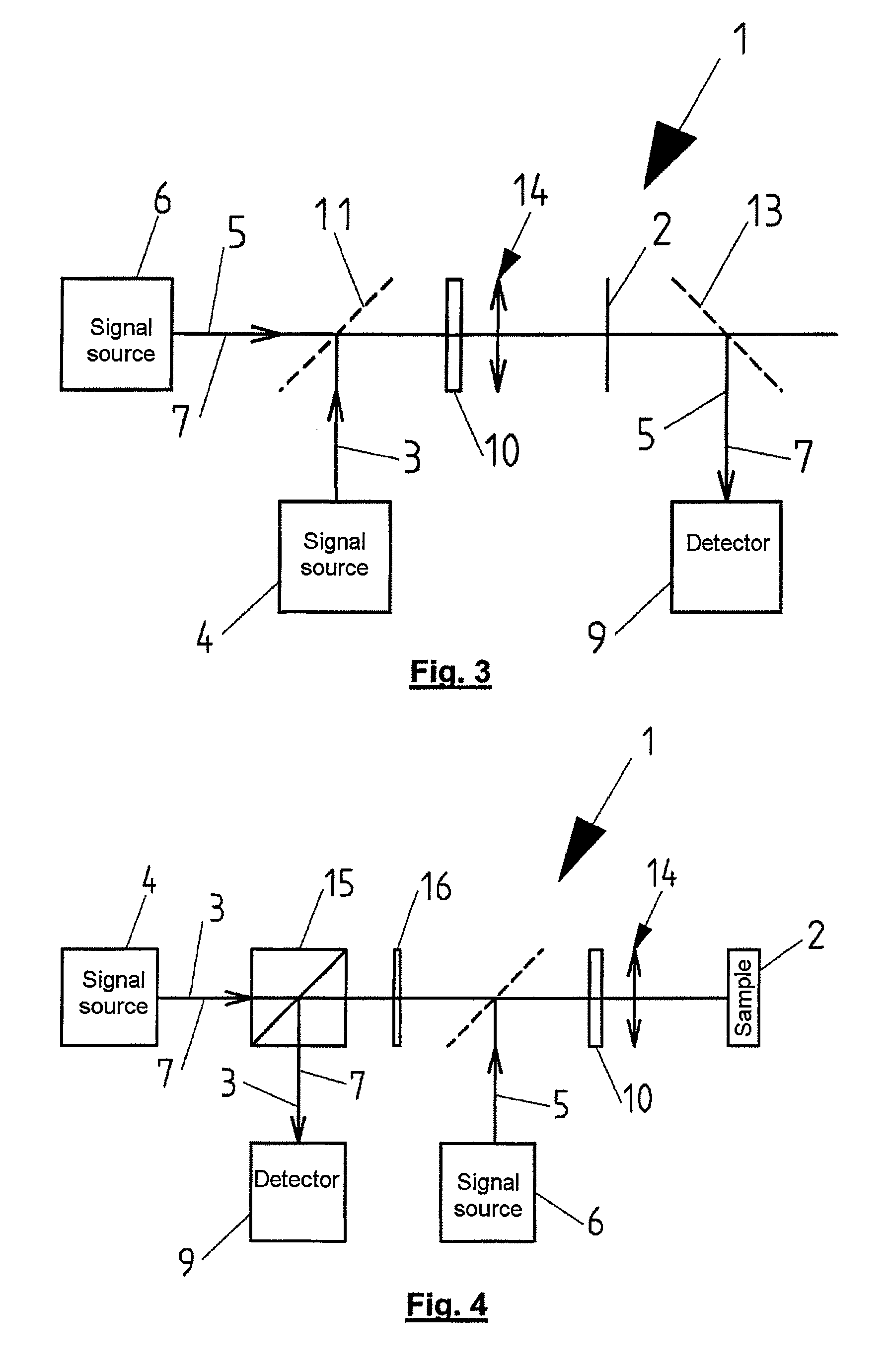Method and apparatus for the high spatial resolution imaging of a structure marked with a substance
a high spatial resolution and imaging technology, applied in the field of high spatial resolution imaging of structures, can solve the problems of fluorescent dyes, undesirable chemical conversion of fluorescent dyes, and methods appertaining to fluorescence microscopy
- Summary
- Abstract
- Description
- Claims
- Application Information
AI Technical Summary
Benefits of technology
Problems solved by technology
Method used
Image
Examples
Embodiment Construction
[0041]S. Berciaud et al.: “Photothermal heterodyne imaging of individual metallic nanoparticles: Theory versus experiment” in PHYSICAL REVIEW B 73, 045424 (2006) have reported that gold nanoparticles having a size of 1.4 nm (67 atoms) can be detected by the PHI technique. The absorption cross section of photochromic dyes at the wavelength maximally absorbed by them is of the same order of magnitude as that of gold atoms in a cluster. Accordingly, at least those regions of a structure marked with a photochromic dye which have a few 10 molecules of the photochromic dye in the first state can be photothermally imaged in accordance with the novel method. At a sufficiently high concentration of the photochromic dye, this condition is noncritical even when the photochromic dye in the sample is changed over by means of the first electromagnetic signal from the first state into the second state with the smaller absorption cross section apart from a region, in each case, which has smaller di...
PUM
| Property | Measurement | Unit |
|---|---|---|
| size | aaaaa | aaaaa |
| temperature | aaaaa | aaaaa |
| refractive index | aaaaa | aaaaa |
Abstract
Description
Claims
Application Information
 Login to View More
Login to View More - R&D
- Intellectual Property
- Life Sciences
- Materials
- Tech Scout
- Unparalleled Data Quality
- Higher Quality Content
- 60% Fewer Hallucinations
Browse by: Latest US Patents, China's latest patents, Technical Efficacy Thesaurus, Application Domain, Technology Topic, Popular Technical Reports.
© 2025 PatSnap. All rights reserved.Legal|Privacy policy|Modern Slavery Act Transparency Statement|Sitemap|About US| Contact US: help@patsnap.com



